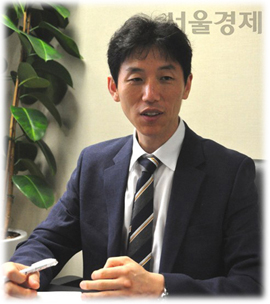| 일 | 월 | 화 | 수 | 목 | 금 | 토 |
|---|---|---|---|---|---|---|
| 1 | 2 | 3 | 4 | 5 | ||
| 6 | 7 | 8 | 9 | 10 | 11 | 12 |
| 13 | 14 | 15 | 16 | 17 | 18 | 19 |
| 20 | 21 | 22 | 23 | 24 | 25 | 26 |
| 27 | 28 | 29 | 30 | 31 |
- Political Regimes
- politics and war
- Differences in Individual Abilities and Tendencies
- survival process theory
- Cohesion Force
- the 3rd Law of politics
- Orderliness of Choice
- Order of Choice
- Operation of the 2nd Law
- politics of Inner Circle
- Mathematical Model of political science
- Value Systems
- new political science
- power and organization
- political organization
- Mathematical Model of politics
- Political Change
- mechanism of politics
- political phenomena
- Task Delegates of the Ruler: Inner Circle
- politics
- Political power
- the 2nd law
- Power
- Canonical Politics
- Samjae Capacities
- 1st Law of politics
- Samjae Capacity
- Political Regime
- Regime Change
- Today
- Total
New Political Science
(3) Phenomenology of Political Ideology 본문
(3) Phenomenology of Political Ideology

The ability to mentally persuade and change others or different political organizations is ideological capacity[Def. 1.3]. Mental persuasion and change lead political actors to make different choices and actions, and the difference leads to disparities in power.
The fact that ideology changes choices and actions can be seen everywhere. The main cause of the Gabo Reform at the end of the Joseon Dynasty was the enlightenment ideology, and the political conflict in the Middle East centered on Jerusalem was an issue of "clashing beliefs and faith, not freedom and hunger." Moreover, during the American Civil War in the 1860s, 500,000 British textile workers who lost their jobs due to the decrease in cotton trade supported the North, which was more distant in terms of interest than the Southern Confederacy, their trading partner in cotton, because of their anti-slavery movement ideology. This is a result of the macro-level operation of ideology. In the West, painters and sculptors focused on depicting the events of the Bible, Gospels, literature, and myths rather than historical reality for centuries. This is an example of the middle-level influence of ideology. President Andrew Jackson of the United States held the idea of equality for all white male citizens and thus sought to expand political opportunities for the emerging classes of the West and South. This is another middle-level case. Roman soldiers served in the army not just for monetary rewards, but also because of values such as pride in their unique way of life. The behavior of hunters who didn't gather plants even when they had nothing to eat in order to save face, and the fact that prostitutes in late medieval Europe could not touch bread and fruits in the market due to the ascetic values of Christianity, are examples of micro-level ideological influence.
In these behaviors, many people who obey acquire political power. The first city-states of ancient Mesopotamia emerged as religious communities integrated around temples, carrying out religious (ideological) activities such as offering sacrifices to the gods. The medieval Church, which can be considered a representative group with ideological capacity, had monks who "inevitably became the most frequent recipients of donations from devout people because of their holiness... As a group, they were wealthy, and their abbots, like bishops, were secular feudal lords who were heavily involved in worldly affairs." The Sarim faction (士林派), a political actor that dominated the middle and late Joseon period, was a group of thinkers with the ideological capacity of Neo-Confucianism.
While ideological capacity does become an important source of political power, it is only one of the sources of political power alongside armed capacity and economic capacity, and nothing more. Falling into the illusion that political power can be obtained with ideological capacity alone leads to unfortunate consequences. The reality of politics is cruel, and this cruelty can be summarized in the 'law of force,' the second principle of 'naturality of survival condition.' No matter how strong the ideological capacity and the cohesion force of a group, the balance of Samjae capacities determines the political hierarchy [Ch.3.106], and the available political capacity varies depending on the situation. Around 747-750 AD, Abu Muslim, the governor of the Abbasid dynasty, suppressed the Bihafarid rebellion, which was based on a new religion, using armed force. More recently, on March 14, 2008, protests erupted in Lhasa(拉薩), the capital of Tibet, demanding Tibet's independence, and many people lost their lives in the bloody events that followed, but the world remained passive.
'Mechanism of Politics' 카테고리의 다른 글
| a. ㉠ Fundamental Beliefs (0) | 2023.12.18 |
|---|---|
| a. Social Structure of Value Systems (0) | 2023.12.18 |
| b. ㉣ Primitive Economy and Advanced Economy (0) | 2023.12.18 |
| b. Wealth Gap (0) | 2023.12.17 |
| Chapter 4. A. (1) Conditions for the Birth & Death of P. Organizations (0) | 2023.12.14 |



